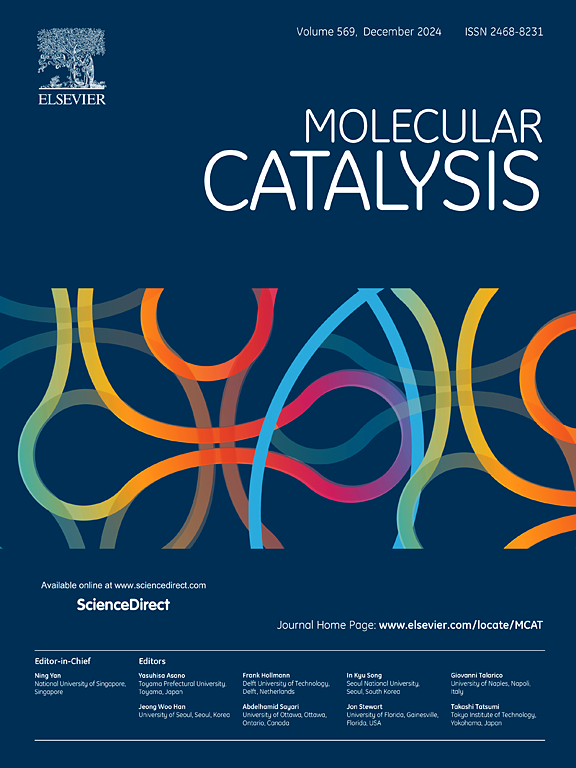W3O6簇上二甲基硫化物去甲基化机理的理论研究
IF 3.9
2区 化学
Q2 CHEMISTRY, PHYSICAL
引用次数: 0
摘要
了解二甲基硫化物(DMS)如何在过渡金属氧化物催化剂上分解形成甲醇等增值产品,对于改进脱硫工艺非常重要。本文采用密度泛函理论(DFT)在M06-L/LANL2DZ/ augc -cc- pvtz理论水平上阐明了氧化钨团簇(W₃O₆)上的反应机理。在W₃O₆簇上发现了两种相互竞争的机制途径:途径A)直接去甲基化,随后是甲醇脱附;途径B)水辅助协同去甲基化途径。途径A涉及具有中等去甲基化势垒(49.43 kcal/mol)的连续步骤,但随后形成甲醇的势垒明显更高(68.78 kcal/mol),形成动力学瓶颈。值得注意的是,途径B由一个明确的水分子介导,促进了低势垒协同转化(56.19 kcal/mol),有效地绕过了高能中间体。通过过渡态理论和能量跨度模型建立的动力学模型表明,尽管转换频率很低(TOF = 9.29 × 10−30 s⁻),但水协助的途径在能量上是优越的。这些发现突出了水在帮助反应进行中的重要作用,并为设计更好的催化剂提供了见解,用于在W₃O₆簇上从DMS到甲醇的脱硫。本文章由计算机程序翻译,如有差异,请以英文原文为准。
A theoretical investigation into the demethylation mechanism of dimethylsulfide over the W3O6 cluster
Understanding how dimethyl sulfide (DMS) breaks down to form value-added products such as methanol on transition metal oxide catalysts is important for improving desulfurization processes. In this study, the reaction mechanism over a tungsten oxide cluster (W₃O₆) is elucidated using density functional theory (DFT) at the M06-L/LANL2DZ/aug-cc-pVTZ level of theory. Two competing mechanistic pathways were discovered over the W₃O₆ cluster: Pathway A) direct demethylation followed by methanol desorption and Pathway B) a water-assisted concerted demethylation pathway. Pathway A involves sequential steps with a moderate demethylation barrier (49.43 kcal/mol), but a significantly higher barrier (68.78 kcal/mol) for subsequent methanol formation, imposing a kinetic bottleneck. Remarkably, Pathway B, mediated by an explicit water molecule, facilitates a lower-barrier concerted transformation (56.19 kcal/mol), effectively bypassing the high-energy intermediate. Kinetic modeling via Transition State Theory and the Energetic Span Model reveal that despite the very low turnover frequency (TOF = 9.29 × 10−30 s⁻¹), the water-assisted pathway is energetically superior. These findings highlight the important role of water in helping the reaction proceed and offer insight for designing better catalysts for sulfur removal from DMS to methanol over the W₃O₆ cluster.
求助全文
通过发布文献求助,成功后即可免费获取论文全文。
去求助
来源期刊

Molecular Catalysis
Chemical Engineering-Process Chemistry and Technology
CiteScore
6.90
自引率
10.90%
发文量
700
审稿时长
40 days
期刊介绍:
Molecular Catalysis publishes full papers that are original, rigorous, and scholarly contributions examining the molecular and atomic aspects of catalytic activation and reaction mechanisms. The fields covered are:
Heterogeneous catalysis including immobilized molecular catalysts
Homogeneous catalysis including organocatalysis, organometallic catalysis and biocatalysis
Photo- and electrochemistry
Theoretical aspects of catalysis analyzed by computational methods
 求助内容:
求助内容: 应助结果提醒方式:
应助结果提醒方式:


